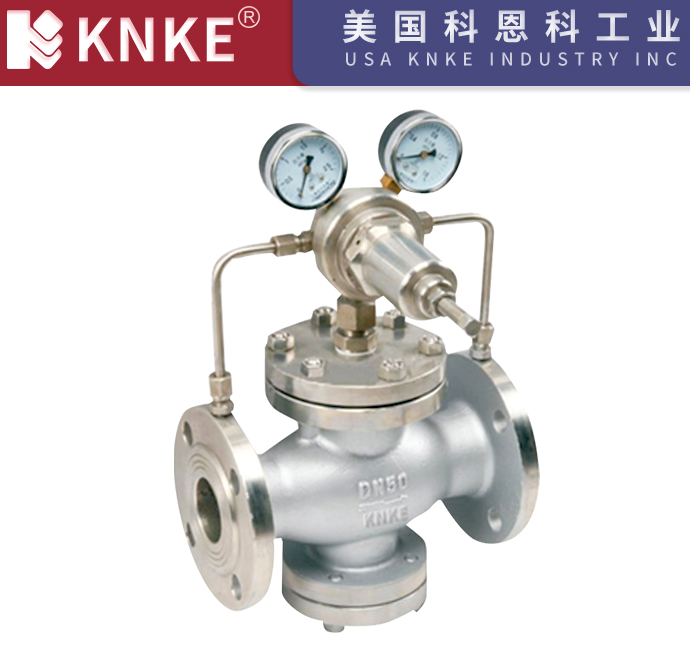The Unsung Hero of Safety and Efficiency: Advantages of Gas Pressure Reducing Valves
Gases are often stored and moved at high pressures in industrial and commercial settings. While necessary for efficient storage, directly using high pressures can be very dangerous and inefficient. Here, the gas pressure reducing valve (or pressure regulator) becomes crucial. These devices are vital for safety, optimizing performance, and cutting operational costs. Let’s explore their many advantages.

Enhanced Safety and Risk Mitigation
The most critical advantage of gas pressure reducing valves is their ability to significantly boost safety. High-pressure gas can be extremely hazardous. It might damage equipment, cause leaks, or even lead to explosions if not controlled.
- Preventing Over-Pressurization: Regulators reduce inlet pressure to a safe, usable outlet pressure. This keeps downstream equipment from facing pressures beyond their limits. It protects sensitive instruments, piping, and machinery.
- Controlling Flow Rates: Regulators maintain consistent downstream pressure. This helps control the gas flow rate, preventing sudden surges or uncontrolled releases. Such control can avert accidents.
- Reducing Wear and Tear: Consistent, controlled pressure lessens stress on components. This minimizes the risk of ruptures, leaks, and early equipment failure.
Optimized Performance and Precision
Beyond safety, gas pressure reducing valves are essential for optimal performance and precision. Many applications need very specific and stable gas pressure to work correctly.
- Consistent Output Pressure: A regulator’s main job is to deliver stable outlet pressure. It does this regardless of inlet pressure changes or downstream flow demands. This consistency is vital for processes like welding, analytical instrumentation, and medical gas delivery.
- Improved Process Control: Stable pressure allows for more precise control. This applies to chemical reactions, heating processes, and other operations needing consistent gas delivery. It leads to higher quality products and better resource use.
- Enhanced Equipment Longevity: Regulators provide a stable operating environment. Thus, they protect delicate equipment from damaging pressure spikes and changes. This extends equipment life and lowers maintenance costs.
Cost Savings and Efficiency
Gas pressure reducing valves aren’t just for safety. They also greatly contribute to cost savings and operational efficiency.
- Reduced Gas Consumption: Regulators precisely control pressure and flow. This prevents waste of expensive gases. It’s especially useful in applications using specialty or rare gases.
- Lower Maintenance Costs: As noted, they reduce wear on downstream equipment. This means fewer breakdowns and less frequent maintenance, saving on repair and replacement costs.
- Energy Efficiency: Controlling gas pressure can directly impact energy use in some cases. For example, precise flame control in heating processes saves energy.
Versatility and Adaptability
Gas pressure reducing valves are incredibly versatile and adaptable. They work with a wide range of applications and gas types.
- Broad Application Range: Regulators are found in almost every sector using pressurized gases. These include industrial manufacturing, healthcare, scientific research, and commercial kitchens.
- Handling Various Gases: Specific regulators exist for nearly every gas type. These include oxygen, nitrogen, argon, carbon dioxide, acetylene, propane, and natural gas. Each is engineered with appropriate materials and safety features.
- Customization Options: Regulators come in various sizes, materials, and configurations. These include single-stage and two-stage options. They meet specific pressure ranges, flow rates, and environmental conditions.
Conclusion
The gas pressure reducing valve, though often overlooked, is crucial in any system using pressurized gases. Its advantages in safety, performance optimization, cost savings, and versatility make it an indispensable tool for efficient and secure operations. Investing in high-quality pressure regulators isn’t just about compliance; it’s about smart engineering. This engineering protects people, preserves equipment, and promotes overall operational excellence.

Great breakdown of the role gas pressure reducing valves play in both safety and efficiency. It’s easy to overlook how much risk is involved when working with high-pressure gases, so it’s helpful to see this reminder of how pressure regulation is not just a performance issue, but a critical safety measure too.